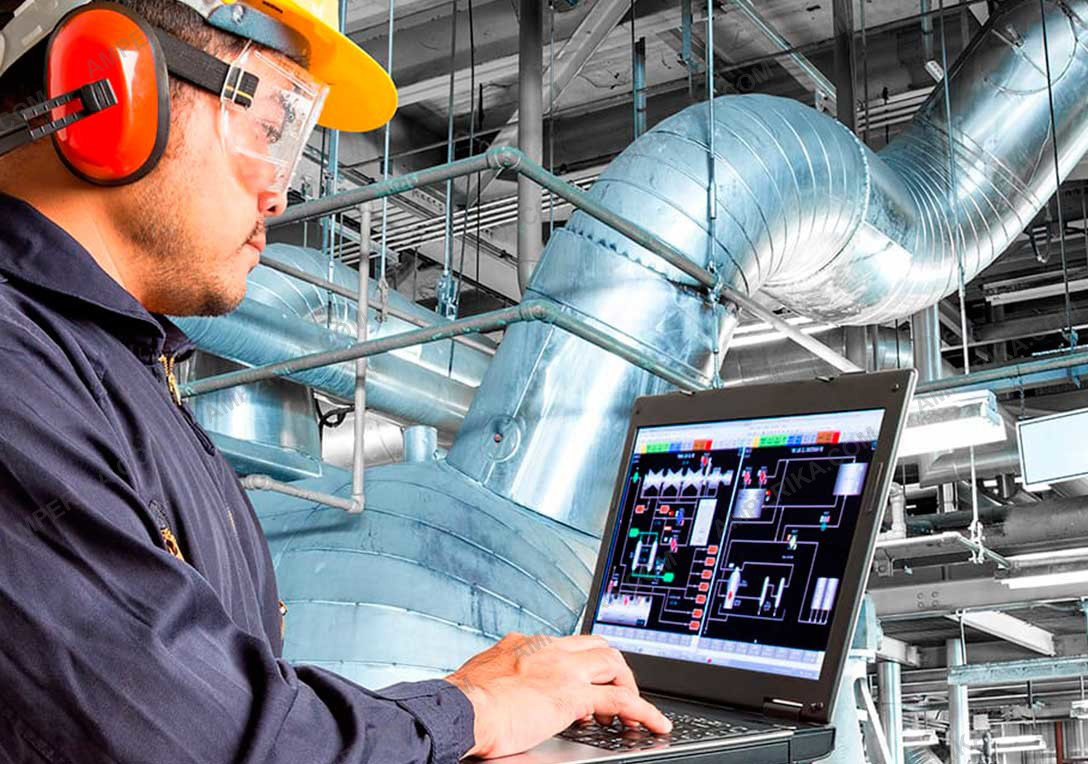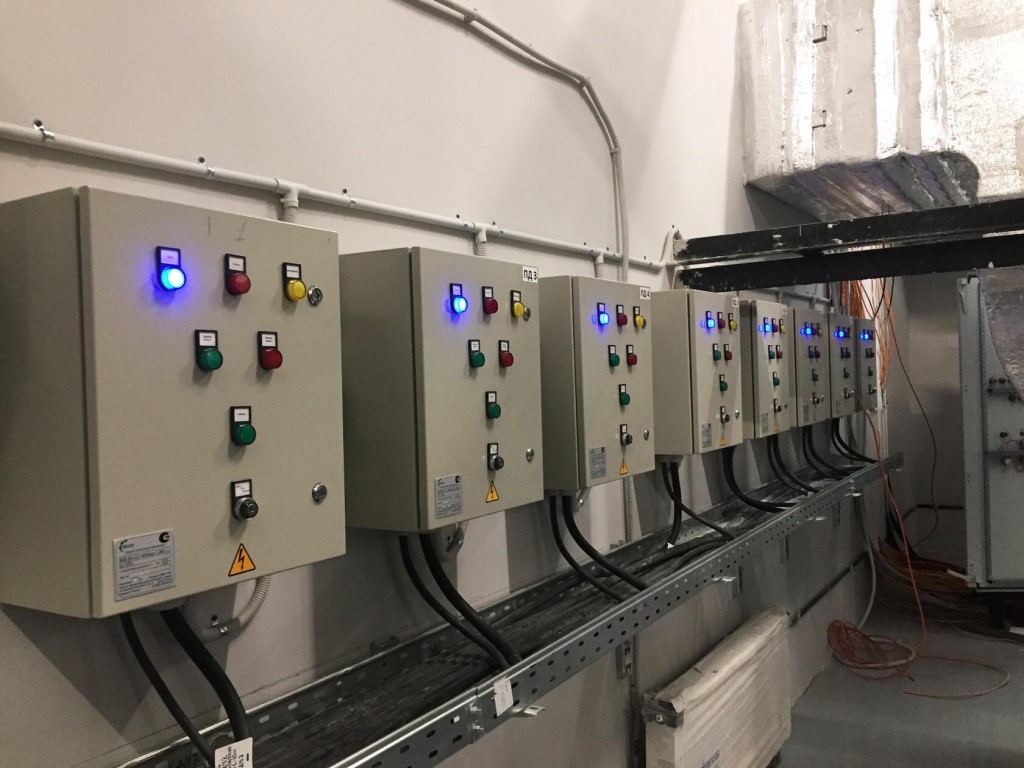Automation of ventilation systems: convenient, efficient, economical. Automation of ventilation systems and ventilation control systems
Automation of ventilation systems — an important step in maintaining an optimal microclimate, pressure, heating and air conditioning. A modern ventilation system with an automation system provides precise regulation of microclimate parameters, thanks to sensors, controllers and dispatching systems. An automatic control system and automation of ventilation systems allows you to automatically change the power of exhaust systems depending on the outside air and the load on the object.
Modern automation systems, such as smart ventilation, ventilation automation, automation panels, ventilation automation systems, provide comfort, economy and reliability. Automation should be taken into account even at the installation stage so that the control and performance regulation systems work harmoniously. Ventilation automation in Kiev, offered by the Ventilator company, involves the selection, design and supply of all necessary equipment, including automation systems, ventilation systems, ventilation and air conditioning.
For consultation, contact the Ventilator online ventilation store at:
? +38 (044) 238-24-81
What is an automated ventilation system? Automation of ventilation systems, air conditioning and ventilation automation panels
A modern ventilation system is not just air supply and exhaust. Thanks to automation, ventilation units are able to independently adapt to indoor conditions, change operating modes, respond to changes in temperature, humidity or CO₂ content.
Automated ventilation is a set of technical means, programs and elements that allow you to optimize the processes of regulating air exchange without constant user participation. This approach increases the efficiency of ventilation systems, reduces electricity consumption and ensures a stable microclimate in residential, commercial and industrial premises.
Main components of ventilation system automation: sensors, controllers, automation

Ventilation system automation is based on several key components: sensors, controllers and ventilation automation panels. A smart automation system allows you to maintain optimal parameters in the ventilation and air conditioning system. The controller processes the signal received from the sensors and transmits it to control systems or dispatching systems.
The automation system controls the entire ventilation system — fans, ventilation systems, heating and air conditioning systems. Modern ventilation dispatching systems allow you to control the operation of the entire system remotely. Automation systems offered by Ventilator include all the necessary components for the effective operation of the entire system.
Ventilation automation reduces the load on ventilation systems and provides precise parameter control. Automation systems and ventilation system equipment allow you to work with maximum efficiency. Implementation of automation systems is a necessary stage for the stable operation of ventilation solutions.
The heart of any automatic ventilation control system is a set of interconnected devices, each of which performs its function:
Sensors
Sensors measure the physical parameters of the air in real time: temperature, CO₂ level, humidity, pressure in the air ducts. Depending on the values, the system adjusts its operation.
Controllers
Controllers are intelligent automation elements that analyze data from sensors and transmit commands to ventilation units. It is the controllers that decide when and how to change the operating mode.
Control units
These modules connect all elements of ventilation system automation into a single network. They are used to configure operating modes, create scenarios, and set threshold values. Some units can work with mobile applications or smart home systems.
Fan speed controllers
Such devices allow you to change the fan performance according to current needs — reducing electricity consumption and noise levels.
Together, all these elements of the ventilation system provide precise, stable and energy-efficient regulation of the air environment.
Advantages of automation of ventilation systems
Integrating automation for ventilation has a number of obvious advantages:
Energy savings
Thanks to precise regulation of the performance of the units and adaptation to external conditions, automated systems significantly reduce electricity consumption. For example, if the CO₂ level in the room is normal, the system switches to the minimum operating mode without wasting unnecessary resources.
Comfort and stable microclimate
An automatic ventilation system maintains the optimal level of humidity, temperature and freshness of the air without constant human intervention. This is especially important for residential premises, offices, medical and educational institutions.
Reducing equipment wear
Automation of ventilation processes allows you to avoid peak loads and extend the service life of equipment due to smooth regulation and timely adaptation to changes in systems.
Increasing operational efficiency
Thanks to automatic monitoring, the system itself signals the need for maintenance, filter replacement or cleaning of components — this reduces the risk of malfunctions.
Examples of automated solutions for home and business

Automated solutions for home and business include ventilation automation panels that provide full control over the operation of fans, heating and air conditioning systems. In private homes, ventilation automation systems allow you to maintain a comfortable microclimate without constant user intervention. For business, ventilation automation includes dispatching ventilation systems, which provides control from a single center over large facilities.
Modern automation systems are adapted for different scales — from apartments to office buildings. They optimize energy consumption and improve the efficiency of all systems. The implementation of such solutions — is an investment in comfort, safety and savings.
The modern market offers a wide selection of ventilation units with automation elements — from basic models to full-fledged solutions for a smart home or business center:
- For private homes: compact recuperators with automatic mode that react to the humidity level or the presence of people.
- For offices: centralized ventilation systems with programmable modes that take into account operating hours, outdoor temperature, pressure and room load.
- For commercial and industrial facilities: scalable systems with multi-level automation that integrates with other engineering systems — heating, air conditioning, fire safety.
All these solutions have one thing in common — automation provides better performance with less resource consumption.
Tips for choosing and installing an automated ventilation system
For ventilation automation to be truly effective, it is important to take into account a number of aspects at the design stage:
- Analysis of room parameters — volume, purpose, number of people, presence of other engineering systems;
- Professional selection of equipment — incorrect automation or sensors can lead to incorrect operation;
- High-quality installation and adjustment — incorrect integration of controllers and sensors reduces the efficiency of automation;
- Regular maintenance — even automated systems require periodic inspection and calibration.
We recommend contacting professional companies that have experience in implementing comprehensive solutions for automation of ventilation systems. This guarantees reliability, economy and long-term operation.
Ventilation automation — is not just a technological trend, but a real opportunity to make the air in your home or office fresh, safe and controlled. Smart ventilation systems — are convenient, efficient and economical.
When choosing automation systems, it is important to consider the type of room, air exchange needs and budget. For residential and commercial facilities, it is recommended to install modern fans with the ability to connect to automation. A high-quality automation system should include temperature, humidity, CO₂ sensors, as well as controllers for regulating the operation of fans and other devices.
It is better to entrust the installation of an automated system to professionals who will take into account all the technical nuances and ensure proper integration with existing equipment. This guarantees stable system operation, energy efficiency and a comfortable microclimate.
You can buy fans, controllers, sensors and other elements of automation systems in the Ventilator online ventilation store. We offer a wide range of equipment for home and business, professional advice and support.
? Learn more about the solution at ventilator.ua or get expert advice.
? Contact us: +38 (044) 238-24-81 – and we will help you choose the perfect solution for your facility.



















Write a comment